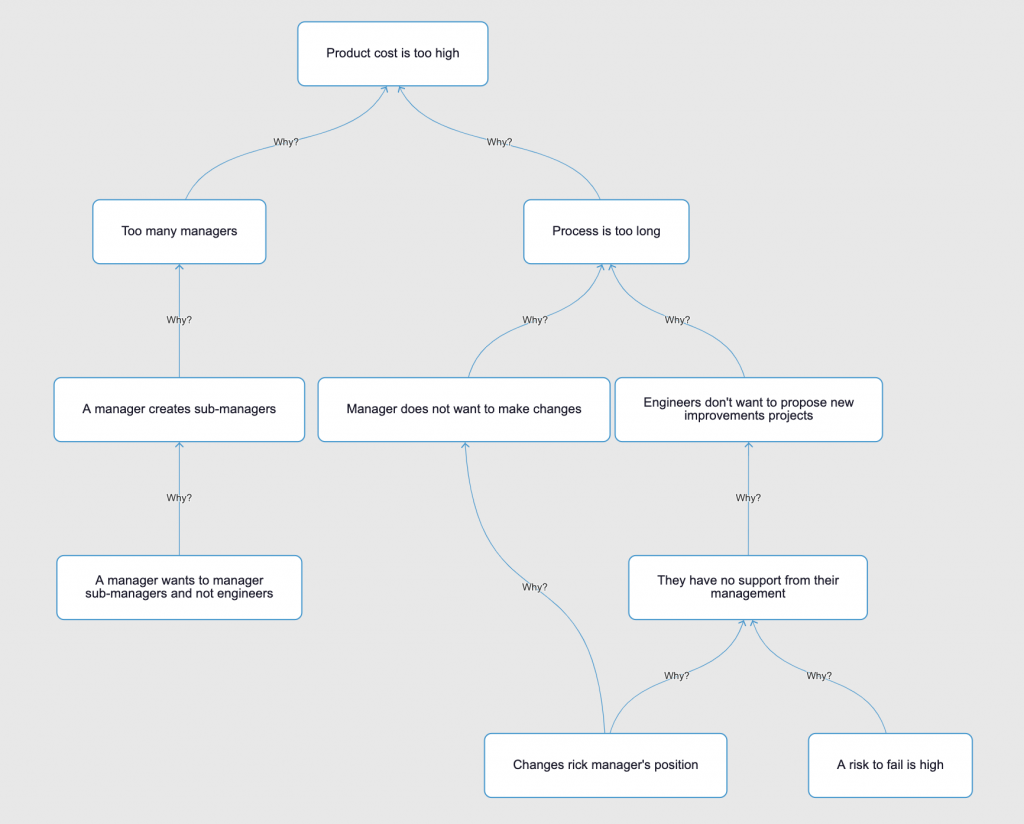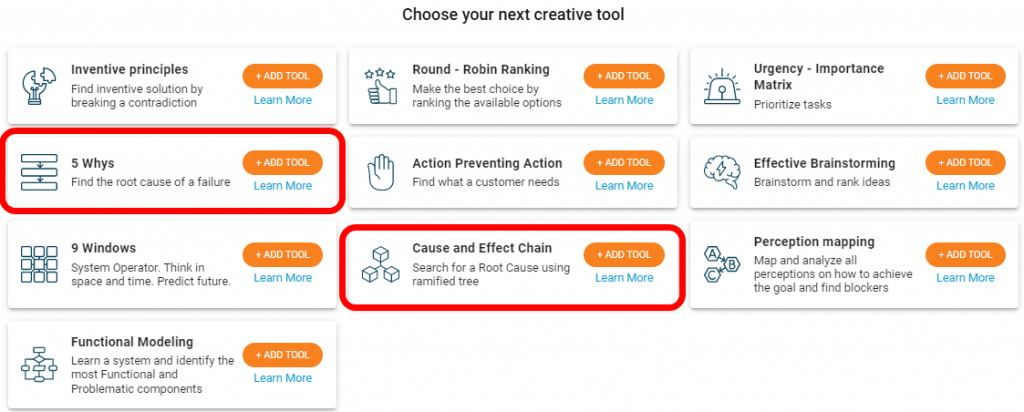
Root cause analysis is one of the most popular tools in the problem solving process. And, the majority of people, honestly believe that once the root cause is found, the problem is solved. That is an incorrect statement. In this article, we want to explain why.
First, we should understand what the root cause actually is. In our vision, the root cause is not necessarily the fundamental reason for the problem. We like to split the definition into two reasons:
PRIZ Innovation Platform offers two instruments for root cause analysis: 5+ Whys and Cause & Effect Chain. Both of these tools have a slightly different approach to the analysis.
Cause and Effect Chain (CEC) analysis is performed by answering the question “Why?” allowing the creation of chains and branches to cover all possible directions for the reasons that may cause a problem. The result is a tree displaying the causality between different components or events.
Besides being a thinking and brainstorming tool, the CEC analysis is an excellent way to learn how the system operates. CEC is recommended for the very beginning of the problem investigation.
Some examples of what CEC can be very useful for include:
In some cases, CEC can also be used for problem definition; therefore, the investigation process can start from failure. The example of CEC analysis is shown below. The problem under the investigation is “Product cost is too high”:

5+ Whys is a modification of the classical 5Whys method. The analysis is done by answering the question “Why?” moving sequentially from the target disadvantage (Problem) down to the problem’s fundamental reason. There are several features of the 5+ Whys tool:
The typical example of the 5+Whys tool is shown below:

Read more about the 5+Whys technique in our blog: A ROOT CAUSE ANALYSIS USING PRIZ INNOVATION PLATFORM
Both tools can be found on the “Creative Tools” page:

And that is it. Start solving problems with PRIZ Innovation Platform and use root cause analysis tools to help with it.
Good luck
Pham Quoc Du
August 11, 2022
Very good